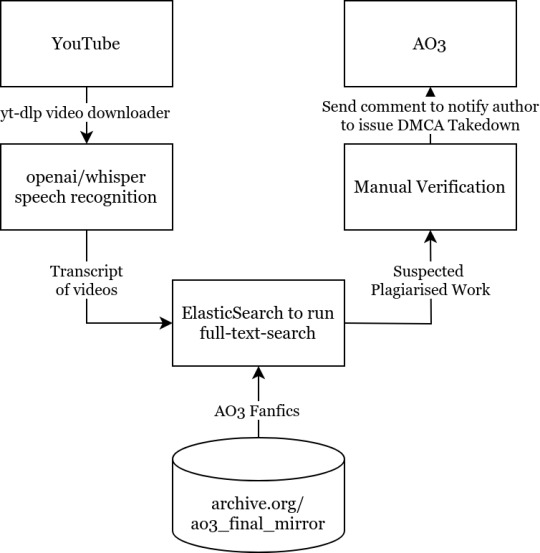#toolchain
Explore tagged Tumblr posts
Text
Mastering Automation: Our Toolchain for Software Excellence
Struggling with manual processes slowing down your development team? We've been there! That's why we built a robust automation toolchain to streamline our workflow and achieve software excellence.
Head over to our latest blog to discover the secrets to our success: https://fleekitsolutions.com/mastering-automation-our-toolchain-for-software-excellence/
#automation#softwaredevelopment#devops#toolchain#softwareexcellence#efficiency#productivity#workflow#agility#qualityassurance#continuousintegration#continuousdelivery#cicd#devsecops#innovation#scalability#cloud#india#noida#startups#technology#engineering#business#growth#developers#softwareengineers#read#learn#share
0 notes
Text
It's 10pm … Never give up on ESP32-S3 Linux builds… success! 🔧💻🎉
#esp32#esp32s3#linuxbuilds#engineering#dockercontainer#virtualbox#toolchain#compilation#opensource#technology#realengineer#innovation
0 notes
Text
Ah, the reason why i couldn't get the firefox-nightly package to build was because of a nightly-only regression in some simd crate in rust (which is to be expected, nightly has no stability guarantees, but still annoying), switching to stable seems to have fixed it. I'm surprised it's taken me this long to get bitten in the ass for using nightly as my default rust toolchain, I've had it this way for multiple years now.
Now I just gotta wait 3 hours for it to build :)
2 notes
·
View notes
Text
A Comprehensive Guide to Kubernetes Toolchains for Microservices
Kubernetes has become the de facto standard for managing containerized applications, particularly in the world of microservices. With Kubernetes, developers can seamlessly scale, manage, and automate deployments. However, managing a Kubernetes environment efficiently requires a robust set of tools to enhance the workflow, ensure smooth deployment, and monitor performance. In this detailed guide,…
0 notes
Text
I’m Declaring War Against “What If” Videos: Project Copy-Knight

What Are “What If” Videos?
These videos follow a common recipe: A narrator, given a fandom (usually anime ones like My Hero Academia and Naruto), explores an alternative timeline where something is different. Maybe the main character has extra powers, maybe a key plot point goes differently. They then go on and make up a whole new story, detailing the conflicts and romance between characters, much like an ordinary fanfic.
Except, they are fanfics. Actual fanfics, pulled off AO3, FFN and Wattpad, given a different title, with random thumbnail and background images added to them, narrated by computer text-to-speech synthesizers.
They are very easy to make: pick a fanfic, copy all the text into a text-to-speech generator, mix the resulting audio file with some generic art from the fandom as the background, give it a snappy title like “What if Deku had the Power of Ten Rings”, photoshop an attention-grabbing thumbnail, dump it onto YouTube and get thousands of views.
In fact, the process is so straightforward and requires so little effort, it’s pretty clear some of these channels have automated pipelines to pump these out en-masse. They don’t bother with asking the fic authors for permission. Sometimes they don’t even bother with putting the fic’s link in the description or crediting the author. These content-farms then monetise these videos, so they get a cut from YouTube’s ads.
In short, an industry has emerged from the systematic copyright theft of fanfiction, for profit.
Project Copy-Knight
Since the adversaries almost certainly have automated systems set up for this, the only realistic countermeasure is with another automated system. Identifying fanfics manually by listening to the videos and searching them up with tags is just too slow and impractical.
And so, I came up with a simple automated pipeline to identify the original authors of “What If” videos.

It would go download these videos, run speech recognition on it, search the text through a database full of AO3 fics, and identify which work it came from. After manual confirmation, the original authors will be notified that their works have been subject to copyright theft, and instructions provided on how to DMCA-strike the channel out of existence.
I built a prototype over the weekend, and it works surprisingly well:

On a randomly-selected YouTube channel (in this case Infinite Paradox Fanfic), the toolchain was able to identify the origin of half of the content. The raw output, after manual verification, turned out to be extremely accurate. The time taken to identify the source of a video was about 5 minutes, most of those were spent running Whisper, and the actual full-text-search query and Levenshtein analysis was less than 5 seconds.
The other videos probably came from fanfiction websites other than AO3, like fanfiction.net or Wattpad. As I do not have access to archives of those websites, I cannot identify the other ones, but they are almost certainly not original.
Armed with this fantastic proof-of-concept, I’m officially declaring war against “What If” videos. The mission statement of Project Copy-Knight will be the elimination of “What If” videos based on the theft of AO3 content on YouTube.
I Need Your Help
I am acutely aware that I cannot accomplish this on my own. There are many moving parts in this system that simply cannot be completely automated – like the selection of YouTube channels to feed into the toolchain, the manual verification step to prevent false-positives being sent to authors, the reaching-out to authors who have comments disabled, etc, etc.
So, if you are interested in helping to defend fanworks, or just want to have a chat or ask about the technical details of the toolchain, please consider joining my Discord server. I could really use your help.
------
See full blog article and acknowledgements here: https://echoekhi.com/2023/11/25/project-copy-knight/
7K notes
·
View notes
Text
0 notes
Text
fuck it
i wonder how many people have browsed my site long enough to notice i have a discord server
4 notes
·
View notes
Text
Sonic 1 Mega CD Port




(download here)
(if you think this is cool, consider helping me find work/money <3)
Welcome to the Next Level!
NOTE: I'm aware of issues regarding audio playback and transitioning between zones, and intend to push an update once the contest judging period is over. In the meantime, you can use level select (Up Down Left Right A + Start at title screen) to explore the game.
At the 1992 Consumer Electronics Show, a teaser for a Mega CD version of Sonic 1 was shown within a sizzle reel. No Mega CD version of Sonic 1 was ever produced, and this footage is almost everything we know about this project, but it's extremely likely that this idea is what morphed into the separate game Sonic CD, the only Sonic game officially released for the console.
In 2006, Stealth released the Sonic for MegaCD tech demo, marking the first time any substantial effort was made to bring another Sonic game to the console. It contained the title screens and first levels of Sonic 1 and 2, with three playable characters. In the following years, he would build on the ideas in that demo further, eventually reaching a point where his setup accommodated a Mega CD version of a rom hack called Sonic Megamix.
For a long time, this rom hack was the only way to experience Sonic 1's levels, and was the closest you could get to playing the original game on your Mega CD...
until now.
This is a port of the original Sonic the Hedgehog (revision 1, mostly) to the Sega Mega CD (running in Mode 2/off a CD). Not a mere one-zone demo, not affected by an original hack's mechanics, this is a full playable Sonic game running on the Mega CD, with the source fully available, and with the intent of enhancing the game with the extra hardware.
I started this project about a month and a half ago to enter into the annual Sonic Hacking Contest. This was done as both a learning experience for myself to learn new hardware (I was already familiar with programming for Mega Drive, but wanted to explore its addons), and as an example others can learn from.
This has been tested with BlastEm, Fusion, Gens, and on real hardware using a Mega Everdrive Pro.
Features:
Expanded Sound.
The Mega CD comes with a chip supporting PCM playback for up to 8 channels, complementing the 10 sound channels already in the Mega Drive. This port leverages that by moving playback of drum samples to a custom PCM sound driver running on the Mega CD CPU.
Because drums no longer need to play on the Mega Drive hardware, an extra sound channel was added in the main sound driver to allow for more sound effects to play without cutting out channels of the music.
Unfortunately, I was not able to get CD audio playback fully implemented in time for the initial release. Most of the pieces are there though, and I intend to add it in a future update.
An open-source Mega CD game. The scene for Mega CD has grown significantly over time, and over the years there has been new homebrew and hacks of other games, but not nearly as much done with the blue guy this contest is about. This port aims to change that; this is a full game running on Mega CD, with source code and development history available for browsing right now. Code for the kernel programs to load and run the game from disk is written in mostly C using the megadev toolchain. Rom hackers and developers more familiar with the Mega Drive standalone can use the code repository as an example of how to bring more full-fledged MD projects over to Mega CD with as few changes as possible.
Other features:
Custom loading screen while files are loaded from CD
Modified title screen, to remind you that this is indeed utilizing Mega CD hardware
Various bugfixes applied (for those familiar with Sonic Retro's Sonic 1 disassembly, FixBugs is turned on)
Much smoother special stage. The movement of objects making up the maze was unlocked, and the walls now display with 128 degrees of rotation (up from 16).
Even though I started this project to have something for the contest, I'm incredibly happy with what's been done so far, and I intend to work on it further after the contest to add more features. I consider this the beginning of a goodbright future for Sonic games and hacks on Mega CD.
Note: Debug mode and sound test have not been fixed to accommodate for the code that has been moved around. Try at your own risk!
Credits
Main developer: Amy Farbright
Playtesting and bug reporting: The Let's Talk About Sonic Discord
Special thanks: @fiffle, @milly, @crepe
Code used/referenced:
drojaazu's megadev toolchain
Devon's partial Sonic CD disassembly
SCHG How-to Guide
tversteeg's Rust implementation of rotsprite
Graphics used:
CD graphic on title screen: Sega Multimedia Studio, converted from sprites ripped by Mister Man
35 notes
·
View notes
Text
i spent 2 hours trying to figure out how to write an INCREDIBLY BASIC shader and still fumbled it. but everything else in this toolchain works great. i love the hologram look.
may as well play with the format i got. surprise 3d.
i can't tell you how nice it is to have telephone poles that are actually STRAIGHT lmao
10 notes
·
View notes
Text
Me trying to explain what I'm working on: Yeah, sure! I am just learning how to use cmake files to get Piper to compile to WASM using the emscripten toolchain so we can get it to run on WebGL in an effort to get high quality on-device voice synthesis. The issue is that Piper's cmake files were only configured to use MSVC and gcc, but emscripten only uses Clang. So now I have to rewrite the cmake files to use ClangCL which is Clang with MSVC-like CLI. I could also try to use Clang directly, but I'm worried this would require using a non-MSVC generator for cmake and result in more work. It also seems like every generator and compiler can end up passing parameters slightly differently, which can lead to the build failing. MSVC needs to have utf-8 mode enabled in a different way, or else the compiler will detect multi-byte characters as separate characters. Piper takes care of this for MSVC, but when you use Clang with MSVC-like CLI, you need to do it in yet another way. I've been dealing with half a dozen issues like this. Different C++ compilers also seem to have varying levels of permissiveness about enforcing the One Definition Rule. No compiler is mandated by any standard to do anything regarding the violation, it leads to undefined behaviour, which leads to Piper failing under ClangCL even when everything else is set correctly -- from ClangCL's perspective the code in the translation unit is simply incorrect.
C++ build systems are cursed.

62 notes
·
View notes
Text
It's 10pm … Never give up on ESP32-S3 Linux builds… success! 🔧💻🎉
It's 10pm. Do you know where your engineers are? Last time we did a video, we were mucking about with trying to get Linux running on an ESP32-S3 by compiling the shell script provided over at https://gist.github.com/jcmvbkbc/316e6da728021c8ff670a24e674a35e6 - we tried a few methods, and it got quickly into a yak-shaving mess https://www.hanselman.com/blog/yak-shaving-defined-ill-get-that-done-as-soon-as-i-shave-this-yak; eventually, we were able to get everything compiled in WSL https://www.youtube.com/watch?v=YWP6gXlFihc, but even that took a few extra steps. so! We did what any REAL engineer does when they have an extensive toolchain to massage: make a Docker container! https://www.hanselman.com/blog/docker-101-and-how-do-containers-work . A container is a lightweight and fast virtual computer and is easy for people to run no matter what operating system they are on - much simpler and smaller than VirtualBox because it has only the bare essentials. The Dockerfile was fun to put together, a little like a text adventure where you have to figure out the exact order of commands to get the babel fish https://www.ifwiki.org/Babel_fish_puzzle but now when run, it will automagically pop out the right files AND you can always terminal into the docker image at the end to customize and re-compile quickly. You can check out the Dockerfile here https://github.com/adafruit/Adafruit_Learning_System_Guides/pull/2589/files and if you want to just download the container image post-compilation check it out at https://hub.docker.com/repository/docker/ladyada/esp32_linux_builder/general
#esp32#esp32s3#linuxbuilds#engineering#dockercontainer#virtualbox#toolchain#compilation#opensource#technology#realengineer#innovation
1 note
·
View note
Note
Why do you like rust?
I've answered this in the past :) Toolchain, optionals, types, syntax, standard library, just everything, really. It's the language whose decisions I agree with most :)
7 notes
·
View notes
Text
General Post for Monday, April 8, 2024
(~1,600 words, 8 mins)
1 - Robot Jobpocalypse Notes: A brief theory that long-term redistribution to manage job losses from automation should consider focusing on inherently more scarce factors of production (land and materials), rather than more dynamic ones (labor and capital).
2 - Niche Smartphone Notes: If the pace of the smartphone industry were slower, niche smartphones might be more feasible.
3 - Coalitional Politics Notes: Many coalition-internal communications take place in public. Possible implications for loyalty vs. truthfulness.
4 - Lab Leak Notes: Separating the "strong" from "weak" lab leak hypothesis for Covid-19.
5 - Property Notes: Not all labor is equally effortful or valuable, so should claims on property be weighted? Entropy implies the gradual degradation of land and products to a "natural condition," which we might expect to either invalidate or weaken a property claim.
-☆☆☆-
1: Robot Jobpocalypse Notes
I've said this before, but I just want to reiterate:
Everyone already knows about the problem where automation can take over a job faster than the economy finds new jobs for those currently employed in that category. (Obviously we could talk about abstract skill capital that they've invested in the job that has now been made less valuable.)
But over the long term, the thing to think about is a bidding up of the prices of land, materials, and energy. For the first two, we can think of this in terms of rents (e.g. "land rents"), as the supply of land is highly inelastic. In theory, the gains from trade should make everyone better off, but that's only if you can bid high enough to get enough resources to survive. If people could always go back to subsistence farming if they had to, the trade would (almost) always make them better off than subsistence farming.
But without land, they can't. It's not just a matter of not selling, as land is taxed, and higher-value uses will bid up the price of the land, and thus the assessed tax.
We want a redistribution that's dynamic and which will respond to changes in market conditions, which won't dampen investment in capital and production, and which is less subject to political capture. Thus the thing to focus on is rent for land and materials, the inherently scarce factors of production, rather than labor (highly responsive to effort) or capital (material configurations).
2: Niche Smartphone Notes
[ @jadagul ]
They're currently putting out a 4.7" rugged phone, which is actually tempting. But if I wanted a keyboard phone from them, the most recent option is the Titan Slim, which came out in 2021 and runs Android 11. (My current phone is on Android 14.)
[...]
They can make some niche phones, but they just can't cover all the niches. There are too many! And because they're a niche producer, they also have lower quality across a variety of metrics: they can't put as many resources into their software stuff because they can't amortize it across nearly as many phones. In order to get the full advantages of a modern industrial toolchain, you need to standardize some stuff so you can spread development work across a ton of devices.
It's interesting to note that the extremely rapid rate of software development, including finding and patching security flaws, is such an obstacle.
In an Elfworld scenario, where some users are buying a phone for 15-25 year use, firms might be able to amortize the costs by updating the model less frequently, and charging more for the base model. They would likely also maintain smaller teams, who would work on the phones for longer.
Smartphones probably won't become such a stable technology for decades, however, and even if they did, we should expect fashion cycles.
3: Coalitional Politics Notes
We've all seen politicians, political operatives, and political party enthusiasts lie a lot. Why don't they lie to (or bullshit (as in speak as though 'indifferent to truth')) outsiders all the time?
There are a number of reasons. One may be that an insider who constantly lies to outsiders all the time could also lie to fellow insiders, and insiders cannot reliably tell whether someone is a general liar or merely a partisan liar.
Since people range in their level of partisanship, this suggests a curve where, from the perspective of someone who is moderately partisan, a speaker can trade some integrity for some partisan loyalty, and vice versa. Someone who has no loyalty and no integrity is of little value. At some point, partisan loyalty will be at odds with the truth due to the inherent contradiction in interests of the coalition members or else just simple imperfection, so someone cannot be both perfectly loyal and perfectly truthful.
For political coalitions, a lot of what is essentially coalition-internal communication takes place in public.
4: Lab Leak Notes
The debate over the potential lab leak origin of Covid-19 has not been settled yet, despite the article on ACX. People are arguing over the individual studies cited in responses to themotte's tracingwoodgrains.
However, we should differentiate between the "strong" lab leak hypothesis and the "weak" lab leak hypothesis.
Strong Hypothesis: Covid-19 was a bioweapon deliberately designed by the government of China and leaked on purpose for some strategic goal.
Weak Hypothesis: Covid-19 was a coronavirus being studied at the lab in Wuhan which studies coronaviruses. This virus may have been the subject of gain-of-function research not intended to create a bioweapon. Subsequently, as the result of an unintentional accident, the virus leaked from the lab, resulting in a global pandemic.
The criticism of the lab leak hypothesis from the more censorious 2020 libs was that, "The lab leak hypothesis is a racist conspiracy theory." The strong hypothesis is a conspiracy theory, but there is no requirement that it is racist - it is sufficient that the government of China openly identify as Communist. The weak hypothesis is neither of these things.
5: Property Notes
There is an Anarcho-Capitalist theory that ownership of unclaimed land is gained by "mixing your labor with it." Many people would ask why this creates a morally-valid indefinite ownership claim.
Alternatively, we could consider a functional decomposition of the operation.
"Mixing your labor" with the land means using [ attention ] to direct [ energy ] to configure [ matter ] according to your intentions. That might mean, for instance, cutting down trees on a lot in order to construct a fence, and then plowing the lot in order to plant a farm for later harvest. However...
Some people may have the intention for the lot, "It should be a wildlife preserve," which looks an awful lot like doing nothing, or perhaps just posting some signs.
Not all labor is of equal intensity. Should someone who uses less labor, or transforms the lot less, have a proportionally lower % claim on the lot? What does a % claim look like as compared to a full claim?
The configuration on the lot will degrade actively with time if it is not maintained. In our example, the wooden fence may break down and rot. Does this degrade the claim on the lot itself?
The metadata about the lot will also be lost, until it may not be feasible to resolve disputing claims of ownership with reasonable certainty.
Back in January, I wrote:
(Side note: The configuration of material inputs, like ore deposits, in the environment, relates to the amount of energy and attention required to recover them. Recycling is mostly about reducing the long-term recovery costs, keeping materials “near the surface.”)
Let's consider an example.
Joe mines a bunch of iron ore beneath a plot of land. The energy and attention required for most desired human uses is reduced.
Joe refines the iron into steel. The energy and attention required for most desired human uses is again reduced. (Did you know 93% of structural steel is recycled?)
Joe shapes the steel into a grill. This reduces the value of the material for other industrial uses, but increases the value for those who want a grill specifically. The steel is now configured as capital equipment.
Joe opens a hamburger shop, and uses the grill to grill hamburgers which he sells to customers.
After deciding to close the hamburger shop, Joe decides to explode the grill for a gender reveal party, scattering pieces all over the lot. The steel has been scattered throughout the environment, increasing the cost in energy and attention to gather it again if someone wants to do something else with it.
The value of the iron is subjective. That's conventional economics. However, there are typical uses that we can say will be common in most near-term human preference environments.
What makes this interesting is that within that common frame, in steps #1 and #2, Joe is pushing the iron up a value gradient. This value addition could then be lost to entropy through abandonment. For instance, in step #1, a landslide could occur, covering the iron back up and requiring it to be mined again. In step #2, the steel could be left out in the rain to rust, requiring it to be refined again.
Preventing this loss to entropy requires active attention and energy. (For instance, securing a nearby hillside to prevent the landslide scenario, or building and maintaining a barn to keep out the rain in the weathering scenario.)
Suppose that Joe abandons the land for 100 years. The steel rusts, and a landslide covers it up. A new prospector, Harold, comes across the land, finds no markings, excavates the rusted iron, refines it to make tools and sells those tools.
Shortly thereafter, Joe returns. Given that the land and materials returned to the natural condition, wouldn't it be strange to invalidate Harold's claim in this scenario?
Supporting a governing system, which could track ownership of the parcel of land and extracted materials, would require ongoing energy and attention on Joe's part. However, the system of deeds and records could be used as an alternative to Joe physically hanging out on the plot of land at all times, which he would have to do anyway to prevent the reversion of the plot of land to the natural condition.
This movement of materials along value and energy gradients is something to consider for a deeper analysis, perhaps oriented towards the development of new ideological principles.
8 notes
·
View notes
Text

Quick landscape test. I used Blender for a rapid prototype and then painted over in Krita.

I'm trying out a new toolchain to reduce frustration when arting, and overall speed my process up.

Its rough but it gets the idea across
14 notes
·
View notes
Text
okah I had that interview with my old job (if you can call it that, since they had no intention of recruiting me and I have no desire to return) and it was certainly illuminating lol. under a cut in case you don't give a shit about corporate nonsense but it's funny I promise
what it comes down to is that the role is "different" now in two key ways: (1) they want someone who currently is or has been a software engineer but also is a technical writer, and who'll start out as an IC and the only member of the team but will eventually scale up to grow the team and become a manager, and (2) has experience working directly with product teams, UX writing, GTM strategy, etc.
re. point two I mentioned that not only are those all things I did (because they're common things that most TWs do), but that they're listed on my resume almost verbatim, which is why linkedin kept telling me I'd be a good fit for the job, and re. point one I was frank and said that like, not only did the job posting itself not convey that at all (because again, I kept getting recommended for it, and everything else in the listing was bog standard TW shit), but basically Good Fucking Luck finding someone who fits that bill lmao. not that "engineer turned technical writer" is unheard of, but it's not the most common path people take, and especially in this job market I'm inclined to think that someone with an engineering background would gravitate towards jobs that pay an engineering salary (i.e., higher than that).
the person I spoke with was pretty receptive about the job listing feedback and said that she didn't write it, the VP of Whoever did, and that they have had quite a few candidates who match the skillset/background they're looking for but I'm skeptical. not to mention how they're not "officially" requiring it to be a hybrid role but they're trying to hire people "who are near the office," whatever that means.
in any case, this confirms all my suspicions about how waterlogged this company's hull currently is, and I wish all the best to whoever lands this role and finds themselves with way more responsibilities than they bargained for. god knows how overwhelmed I was by the end, even with three years of institutional knowledge under my belt. I can only hope the excellent readme files I left behind will make it easy for them to parse my docs toolchain.
also this was a great learning opportunity for me to realize that people suck at communicating what they want—which, okay, I knew that already, but like specifically for job postings. there are soooo many reasons you can apply to a job that perfectly matches your experience and get insta-rejected anyway, but it hadn't occured to me that "they actually want something totally different from what they wrote" could be one of them lol. and then I guess the flip side of that is how you can apply to a job posting and then wind up in a role that's not at all what was advertised. although that is one of the things you should try to sniff out ahead of time in an interview. so watch out I guess
16 notes
·
View notes
Text
in order to date me you need to be able to bootstrap a romantic toolchain on autistic hardware from scratch
4 notes
·
View notes